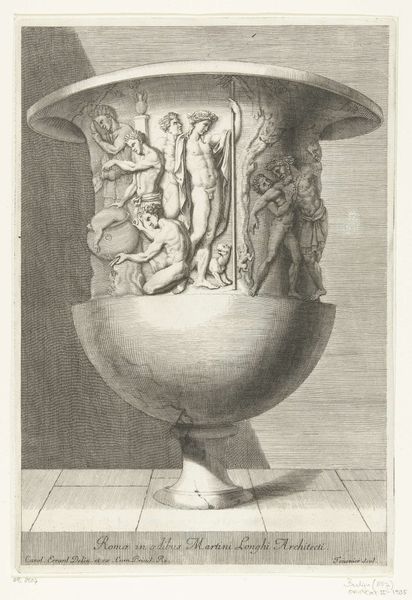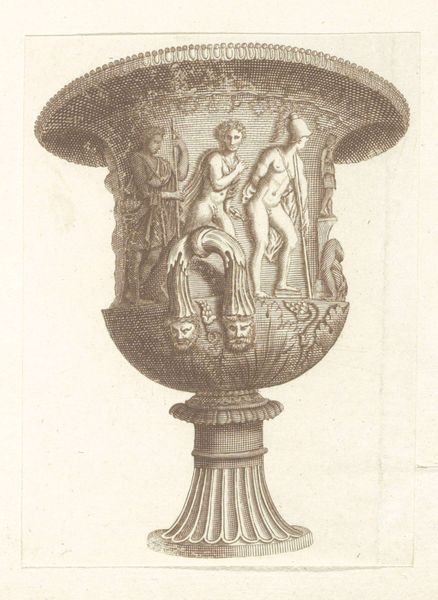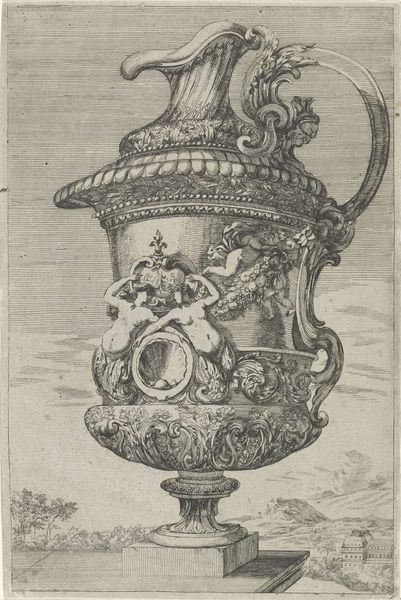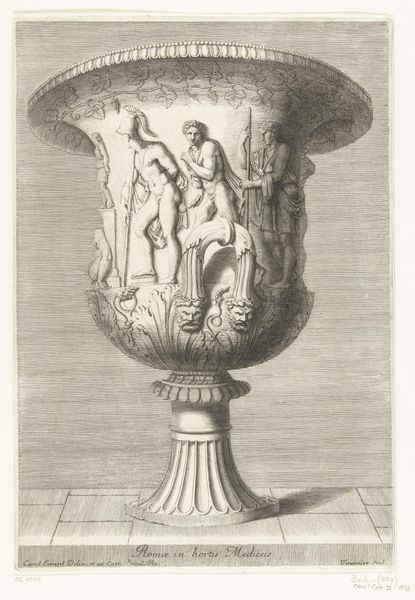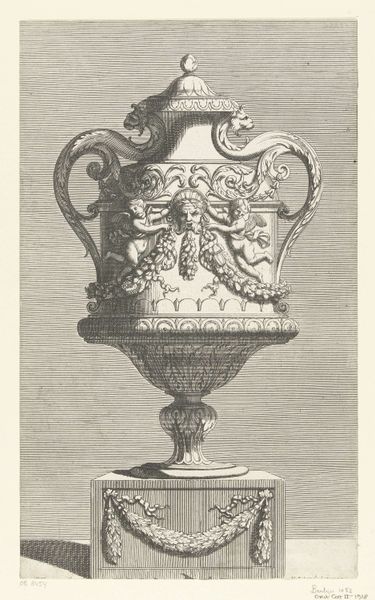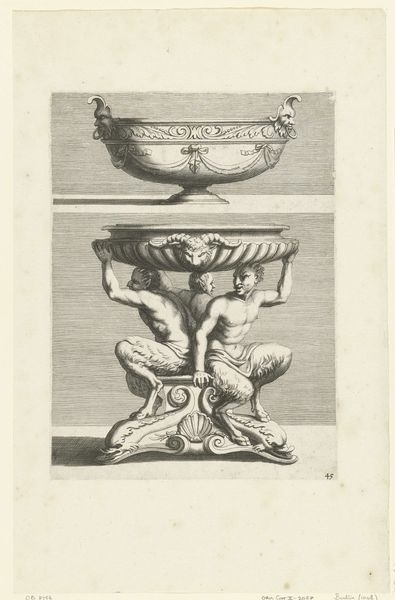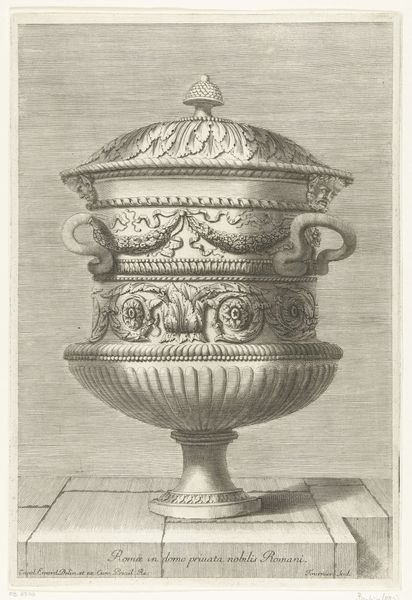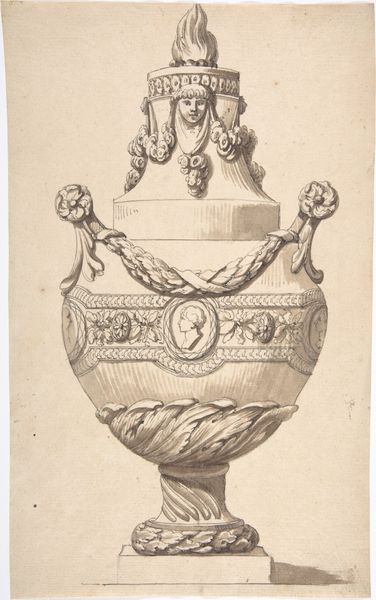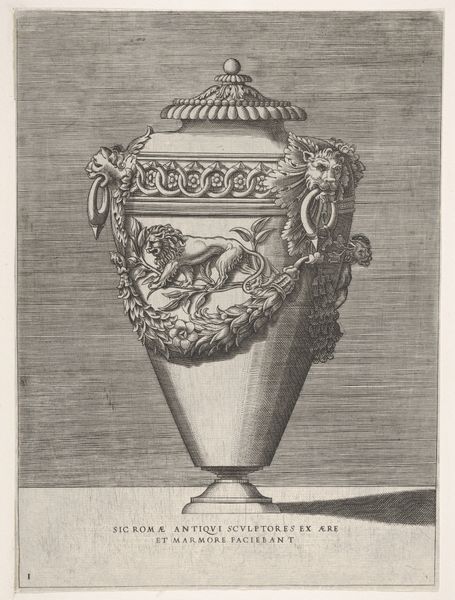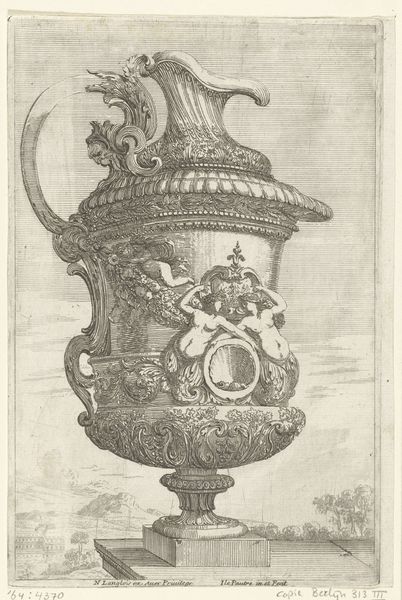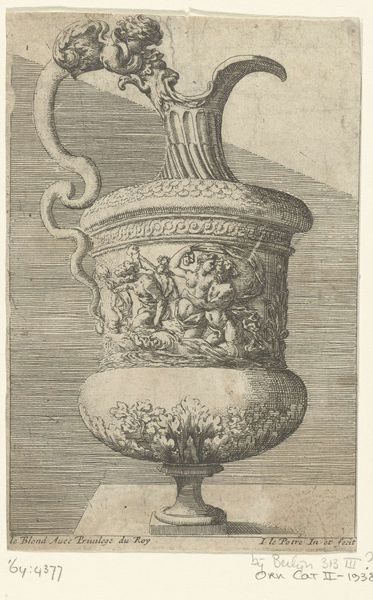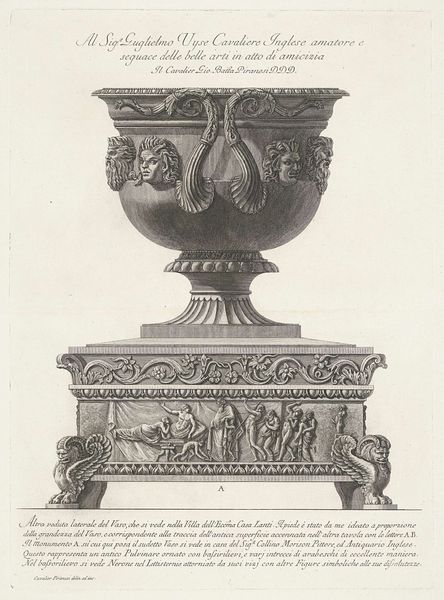
carving, print, metal, sculpture, engraving
#
carving
#
baroque
# print
#
metal
#
figuration
#
sculpture
#
history-painting
#
engraving
Dimensions: height 327 mm, width 225 mm
Copyright: Rijks Museum: Open Domain
Editor: Here we have Georges Tournier’s “Vase Covered with Grapevines,” from around 1650. It looks to be some kind of print, possibly an engraving. I find the texture fascinating, the way the vines and figures are rendered. What’s your take on it? Curator: For me, the key to this piece is in its materiality. We see a reproduction of a presumably very expensive vase, rendered accessible through the mass-producible medium of print. This raises questions about the accessibility of luxury goods in the 17th century. Who was this print *for*, and what did its production say about art patronage at the time? Editor: So you're saying the medium itself, the engraving, is just as important as the image it depicts? Curator: Absolutely. Consider the labor involved in both creating the original vase *and* reproducing it through printmaking. There's a whole social context embedded within the processes, a hierarchy of artistic skill. The engraver is replicating the original artisan's work but transforming it through a different form of labor, introducing an entirely new form of dissemination of the piece. Were there similar power dynamics present during its time of manufacture? Editor: That's fascinating. It almost democratizes the object, bringing what was exclusive to those who could afford these large luxurious pieces into a tangible way to be seen, handled and owned for common people, printed onto paper? Curator: Exactly. The act of reproduction becomes a critical lens through which to examine class, craft, and the burgeoning art market of the period. What statement, if any, does it make to see a vase covered in wine accoutrement replicated so many times over? Editor: I hadn't considered that the print itself was part of the art's statement. I see it in a different way now. Curator: And that's the beauty of understanding art through its materiality. We dig into how and why it was made to reveal so much more.
Comments
No comments
Be the first to comment and join the conversation on the ultimate creative platform.
